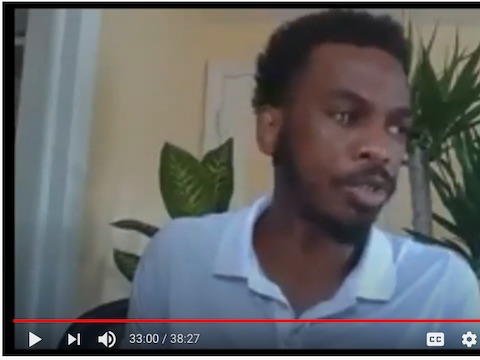Anti-Racism Resources
Writing Center Statement of Intent
We are tutors and your peers. We start from the assumption that finding an academic or professional voice is an evolving and often collaborative process. We offer you a reflective space from which to rehearse your academic moves. We also share what we have learned about academic writing and give you suggestions about how to navigate college courses. We invite you to talk about your professor’s expectations and requirements. We talk with you about the conventions of academic writing, about your writing style, your voice, and your language choices. We work from the belief that no one needs to erase their natural language in order to establish an academic voice. We believe mastering academic and professional language is about integration, developing self-awareness, and being open, curious, and creative in the process.
The Right to Our Own Language
The West Chester University Writing Center affirms that everyone’s language of nurture,
and all Englishes, are inherently eloquent and equal. Each of us owns a language that
is a legacy from those who loved us. Our language is a testament to where we come
from. No language is less than another.
This said, the Writing Center also acknowledges that the systemic and intersecting
forces of racism, xenophobia, and class prejudice create a present reality of double
standards in which some so-called "non-standard" English is disrespected, while other
objectively just-as-non-standard English is given a pass. Language prejudice is brazenly
and unapologetically used as a justification, both in education and in the workplace,
to restrict access to opportunity. Furthermore, language prejudice is inextricably
linked to racism and xenophobia so that the way we look or sound often means we can’t
be heard, regardless of our mastery of the “standard.”
The Writing Center acknowledges the harm and trauma of language prejudice and systemic racism. We commit to fundamental respect as a ground rule in the writing center. Our goal is to ensure students get the support they need to communicate powerfully and persuasively in writing without being judged or stereotyped on the basis of the way they speak or write.
Acknowledgement of Systemic Racism and Xenophobia
Language bias is present for all of us. These systems exist and influence us, sometimes regardless of our best intentions:- Systemic Racism
- Systemic Anti-Blackness
- Language Prejudice
- Xenophobia
- Bias against Speakers of Other Languages
Racism is a broad and shifting framework of discrimination. Black people in the United States and Indigenous people face an ongoing and particularly virulent form of racism due to our country’s collective will to deny and disappear the ongoing legacy stemming directly from the theft of land and the genocide of Indigenous peoples and the enslavement of Africans. We acknowledge the afterlife of these issues by referring to Black, Indigenous, and other people of color (BIPOC), as opposed to thinking in terms of an undifferentiated group of People of Color (POC). This acknowledgement underscores that in the United States the past is present. The history of xenophobia and the current reality of anti-immigration policies mean that speakers of other languages, or any individual who was born in another country, is potentially disadvantaged in educational and work settings. Speakers of some languages are further disadvantaged due to racism. “I can’t understand you” is too often used as a reason to dismiss and disadvantage students and workers.
To contact the Writing Center: email writingcenter@wcupa.edu
Please Reach Out with Any Concerns
We always want to do better. If you have a concern, or have bad experience in the writing center, including but not limited to a bad experience related to prejudice against your language, please contact the Writing Center Director, Margaret Ervin.
POSITION STATEMENTS FROM SCHOLARLY ASSOCIATIONS
From the International Writing Centers Association
- IWCA Position Statement on Racism, Anti-Immigration, and Linguistic Intolerance
- Readings for Racial Justice: A Project of the IWCA SIG on Antiracism Activism
- This Ain't Another Statement! This Is a DEMAND for Black Linguistic Justice (2020)
- CCCC Statement on Ebonics (1998, revised 2016)
- CCCC Statement on Second Language Writing and Multilingual Writers (2001, revised 2009, reaffirmed 2014, revised 2020)
- CCCC Guidance on the National Language Policy (1988, updated 1992, revised 2015)
- Students’ Right to Their Own Language (1974)
From the National Council of Teachers of English
- NCTE Position Paper on the Role of English Teachers in Educating English Language Learners (2020)
- Understanding and Teaching Writing: Guiding Principles (2018)
See especially, Principle 2.2: Writers bring multiliteracies, and they bring cultural and linguistic assets to whatever they do. - Resolution on the Student’s Right to Incorporate Heritage and Home Languages in Writing (2011)
- Resolution on Social Justice in Literacy Education (2010)
SCHOLARSHIP UNDERPINNING THE POSITIONS OF COMMUNICATION PROFESSIONALS
Writing center practitioners often feel an institutional pressure to participate in the effort to mainstream “different” sounding/looking texts. Also, we often feel a sense of immediacy from sitting next to writers who radiate a sense of distress…in these moments, we want to allay that distress. Yet writing center practitioners’ worry about helping multilingual writers succeed in the university as it currently exists may have caused writing center studies to focus too much on the needs of the institution at the expense of the needs of multilingual writers—the individuals and communities with whom we actually work and to whom we are accountable. In providing tips and strategies for helping multilingual writers meet instructors’ (monolingual) expectations, for instance, we have failed to help multilingual writers thrive as individuals and writers with agency. (Bobbi Olson, “Rethinking Our Work with Multilingual Writers”)
I talk to the student about audience and how some people might view their writing and misjudge their capabilities and label them as dumb or having a “cognitive deficit.” I use the language “as a reader this is what I see,” “some readers may interpret this as…” “you as the author have choices.” Then and only then—after I’ve informed the student—do I say “well what do you want to do?” I let them choose. Never once am I forcing any agendas. Never once do I say that their codes are only useful in the brainstorming portion of an essay and then must be erased for fear of judgment. Never once are their codes and their use seen as a crutch or deficit. My approach is very ally centered. (Neisha-Anne Green, in “The Re-Education of Neisha-Anne Green,” p. 78)
Because I am focusing on the ways writing center practices may be complicit with racism, it may seem that I am suggesting that students of color are always newcomers to academic discourse. That is not true. However, it is sometimes true, just as it is also true that many white students are newcomers to academic discourse. My point is that when writers are newcomers to a discourse or a culture, a writing center should be a place where they can expect to find someone who knows how to make discourse and cultural expectations explicit. Too often writing centers are staffed by members of what Jacqueline Jones Royster (2003) calls the “well-insulated community that we call the ‘mainstream’” (616), and that needs to change because the insulation makes it difficult for them to identify the expectations and assumptions they have always taken for granted. (Nancy Grimm, in Writing Centers and the New Racism, p. 77)
Keynote from the Mid-Atlantic Writing Center's Association July 24, 2020 Conference on Anti-Racism
Young, Vershawn Ashanti. “Should Writers Use They Own English.” In Writing Centers and the New Racism : A Call for Sustainable Dialogue and Change, edited by Laura Greenfield, and Karen Rowan. Utah State UP, 2011. 61-72.
This book is available through ProQuest Ebook Central with RamNetID.
Young, one of the foremost scholars in Composition studies, writes this essay entirely in Black English. Rather than just argue that the language of his nurture is eloquent, he also shows it. The essay is an argument in opposition to an opinion piece by Stanley Fish in The New York Times. Young begins with an epigraph from Fish’s article: “First, you must clear your mind of [the following...]: ‘We affirm the students’ right to their own patterns and varieties of language—the dialects of their nurture or whatever dialects in which they find their own identity and style.’” Young has a difference of opinion.
Young, Vershawn Ashanti. "Black Lives Matter in Academic Spaces: Three Lessons for Critical Literacy. " Journal of College Reading and Learning, vol. 50, no. 1, 2020, pp. 5–18.
Read this article to understand Young's term "code meshing" as a way to reorient to the actual linguistic definition of "code switching." Young points out that "leave that language at home" is not "code switching," rather it is linguistic violence. As Vershawn puts it, "We always say we want Black men to succeed; well--let them be Black men in school."
Greenfield, Laura. “The ‘Standard English’ Fairytale: A Rhetorical Analysis of Racist Pedagogies and Commonplace Assumptions about Language Diversity.” In Writing Centers and the New Racism : A Call for Sustainable Dialogue and Change, edited by Laura Greenfield, and Karen Rowan. Utah State UP, 2011. ProQuest Ebook Central with your RamNetID
Among other important contributions to the conversation on linguistic diversity in the context of composition instruction, this article explores assumptions and contradictions inherent in the idea of “Standard English,” a linguistic, rhetorical, and embodied abstraction which, regardless of the liberatory intentions of teachers and tutors, is always an unwieldy assemblage of power.
Delpit, Lisa D. "The Silenced Dialogue: Power and Pedagogy in Educating Other People's Children." In Thinking about Schools: A Foundations of Education Reader, edited by Eleanor Blair Hilty. Westview Press, 2011. 157-175.
Lisa Delpit is quite a controversial figure and as an "assimilationist" is often targeted for critique. Vershaun Ashanti Young even titled a book "Other People's English" in his edited collection that centers on "code meshing." In Delpit's view, well-intentioned white teachers end up doing more harm than good in their attempts to enact linguistic justice in the classroom, certainly something to keep in mind.
Green, Neisha-Anne S. “The Re-Education of Neisha-Anne S Green: A Close Look at the Damaging Effects of ‘A Standard Approach,’ the Benefits of Code-Meshing, and the Role Allies Play in This Work.” Praxis: A Writing Center Journal, vol. 14, no. 1, July 2016, pp. 72–82.
Part memoir and part pedagogical treatise, this essay by celebrated writing center
scholar Neisha-Anne Green describes both her journey as a multi-dialectical speaker
and writer to integrate, not erase her linguistic identity. She also proposes concrete
techniques for working with writers to ensure they maintain control of their language
choices, while also getting the clear instruction they are asking for. One of the
topics she handles is balancing where to state a grammar correction, and where to
discuss a language choice.
Coenen, Hillary, et al. “Talking Justice: The Role of Antiracism in the Writing Center.” Praxis: A Writing Center Journal, vol. 16, no. 2, Mar. 2019, pp. 12–19.
The authors of this article are graduate students working in a writing center who
offer a narrative of their process to create a compassionate and mindful antiracist
training module for tutors and administrators. Key to their project and the article’s
implications is the exploration and evocation of vulnerability and openness for participants
of the training. Only through disruption of our comfortable, often “color-blind,”
assumptions about race and racism can we formulate strategies to counter its effects.
Olson, Bobbi. “Rethinking Our Work with Multilingual Writers: The Ethics and Responsibility of Language Teaching in the Writing Center.” Praxis: A Writing Center Journal, vol. 10, no. 2, 2013, pp. 1–6.
The author reminds us that writing centers are complicit in processes of language “gatekeeping” and makes the case for an ethical shift in our understanding of multilingualism. While many academic and professional contexts understand multilingual writers as deficient in their use of “Standard English,” shifting our perspective to explore how multilingualism promotes a complex, creative orientation to language allows for a rich understanding of rhetorical, contextual, and hybrid features of discourse.
Charity Hudley, Anne, et al. "Linguistics and race: An interdisciplinary approach towards an LSA statement on race." Proceedings of the Linguistic Society of America, vol. 3, no. 1, 2018, pp. 1–14. Accessed 15 July 2020. 8
This article calls for more attention to the historical significance and interdisciplinary of the concept of “race” within the research area of linguistics. The authors provide an extensive review of linguistics literature at the intersection of anthropology, sociology, and education, among other fields of study. This call for a collective “statement on race” can be understood as a desire to collectively acknowledge what has been erased or omitted from previous research and why, to navigate the difficult and sometimes painful process of contextualizing a concept which is always expanding and evolving, and to conceive of pathways forward that allow for rich interdisciplinary work with liberatory ends.
POPULAR PRESS READINGS AND VIDEOS
Articles
Why Do Cartoon Villains Speak in Foreign Accents
How the US Taught Me that Spanish was Shameful
The Talking Black in America Project
10 Ways to Tackle Linguistic Bias in Our Classroom
Videos



